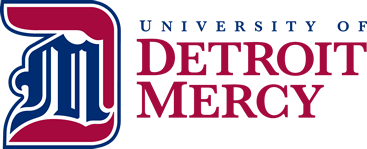Effective July 1, 2010, the Higher Learning Commission stipulated that the University of Detroit Mercy was authorized for “Initiation of distance-delivered offerings, but less than 5% of total degree programs.” Certificate programs do not need to be included when calculating the university’s percentage. The Commission annually reviews the authorization and notifies the university if the percentage is changed.
Based on this information, it is important that all members of the university be aware of the Higher Learning Commission definition of Distance Education and the standard definitions accepted by the university when referencing hybrid and online courses or programs. The Higher Learning Commission defines Distance Education as:
- Education that delivers instruction to students who are separated from the instructor and that supports regular and substantive interaction between students and the instructor synchronously or asynchronously using one or more of the following technologies: the Internet, one-way and two-way transmission through open broadcast, closed-circuit cable, microwave, broadband lines, fiber optics, satellite, or wireless communication devices; audio-conferencing; or videocassettes, DVDs and CD-ROMs used in conjunction with any of the other technologies.
The codes for University of Detroit Mercy distance education courses or programs that incorporate pedagogical and technological tools to deliver course materials to students who are located at a distance from the faculty member are:
onl1: An online course which is completely 100% Internet-based instruction; no on-site physical presence required.
onl2: An online course where 75% - 99% of the instruction and interaction occurs via electronic communication. This distance education course allows for a physical on-site presence for any reason, including orientation, exams, or group work.
hyb1: Course of instruction is 50% in online sessions and 50% in on-site face-to-face sessions.
hyb2: Course of instruction is 51% - 74% in online sessions with remainder of sessions on-site face-to-face.
hyb3: Course of instruction is 1% - 49% in online sessions with remainder of session on-site face-to-face.
The university further defines its course delivery pedagogy and methodology as:
Blended Course (blen): A single course taught both face-to-face and online with some students attending face-to-face session in the classroom while other students simultaneously attend the same session online.
Lecture Capture: Course is taught face-to-face in the classroom but recorded electronically for future viewing or review.
Traditional Course: Material taught using in-classroom, face-to-face instruction.
Web-Enhanced Course: An otherwise traditional, face-to-face course that also uses the Internet to provide students with access to electronic resources and learning activities that would not be available to them in a strictly traditional classroom setting.
Task Force definitions: 12/2012
Undergraduate Coordinators and Registrar 2/2013
Implemented Fall, 2013



